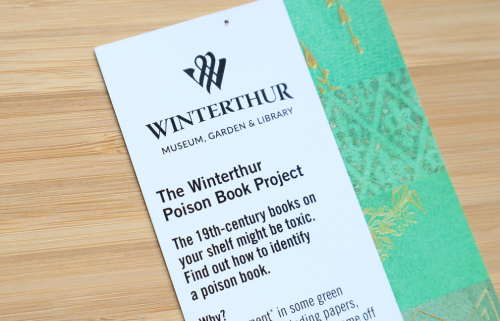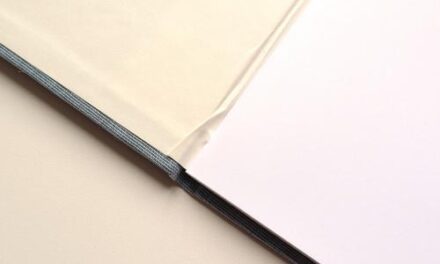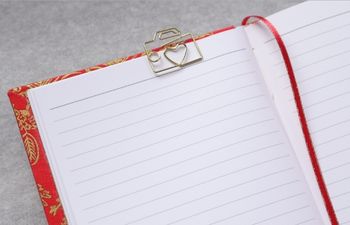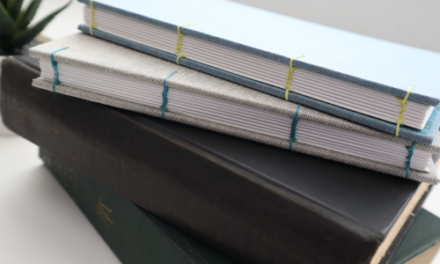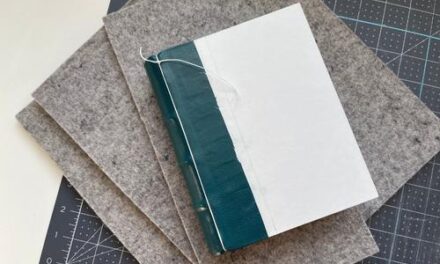Back in 2022, I wrote an article about 19th-century toxic bookcloth and how some of it contained arsenic. Since then, many of you have contacted me to ask if your book is toxic. I’m definitely not an expert on this topic, but I can share what I know and the resources I’ve used in the past. In this post, I’m going to give you some tips on how to tell if the book is toxic, what to do if you have one and where to go for help if you’re still not sure.
What is toxic book cloth?
In short, mass production of books in the 19th-century drove a need for publishers to find a cheaper alternative to expensive leather coverings. The toxic color, “emerald green,” is created by mixing copper and acetoarsenite or arsenite (arsenic, basically). These two ingredients were in high supply at the time because “emerald green” was a favorite color in Victorian-era households. Given the popularity of the color, available supplies and need for cheap coverings, it’s no surprise producers used it.
For more in-depth information, read my article, Do You Have Toxic Bookcloth in Your Library?

This image is courtesy of Winterthur Museum, Garden & Library
Why is it important to determine if my book is toxic?
Just because something is made with toxic ingredients doesn’t necessarily mean it’s dangerous (think: plastic). When it comes to books covered in emerald green, however, we need to pay attention.
The toxic pigment degrades over time and may flake off when handling the book. Since these flakes contain aresenic, they have the potential to cause sores where they’ve met the skin. If the chemical makes it into the bloodstream (via an open wound, for example), the potential impact could be more severe. I’m not a chemist, so I have no idea what concentration is dangerous. To be safe, just don’t handle the book unless you’re wearing proper protective equipment (such as gloves, mask, etc).
How to tell if your book is toxic
Does your book meet one or more of these conditions?
- the book has characteristic “emerald green” colored book cloth (see reference below); this is usually a vibrant green
- there is gold decoration or it has been blind stamped
- the book itself was printed/re-printed sometime in the 19th-century (most commonly 1840s-1860s)
- imprint is either English or American
Paper covered books can also be toxic
It’s true. Paper was also used to cover books during this time. Since paper and sized cloth create different vibrancies of the emerald green pigment, there are some differences to look for:
- the cover is minty green matte or glazed paper (see reference below)
- usually German or French imprint
- most commonly printed/reprinted in the 1830s-1860s
Crap. My book is toxic. What should I do?
Step 1: Properly seal the book
Again, safety first. Grab some nitrile gloves or (anything you have on hand to protect your skin) and place the book into a ziplock bag. Seal the bag.
Step 2: Learn about the Poison Book Project
This special project was created by Dr. Melissa Tedone, head of the book and library materials conservation lab at Winterthur Museum, to help identify and track books covered in toxic cloth or paper. It has everything you need to know.
- The Poison Book Project website *updated frequently
- How To Submit Data to the Poison Book Project
- Arsenical Books Database
Contact information:
- Email: mtedone@winterthur.org
- Physical Address: Dr. Melissa Tedone/Poison Book Project, c/o Winterthur Museum, Garden & Library, 5105 Kennett Pike, Winterthur, DE, 19735
- Phone: 800.448.3883
Step 2: Order a FREE color swatch bookmark from the Poison Book Project
The Poison Book Project provides free color swatch bookmarks to anyone who needs one. They simply ask you to send them an email with some simple info (my original post as the details).
These bookmarks are really helpful. The front side has information on how to identify hardcover books. The back has details about paper covered books, as well as information about the project itself and a QR code.
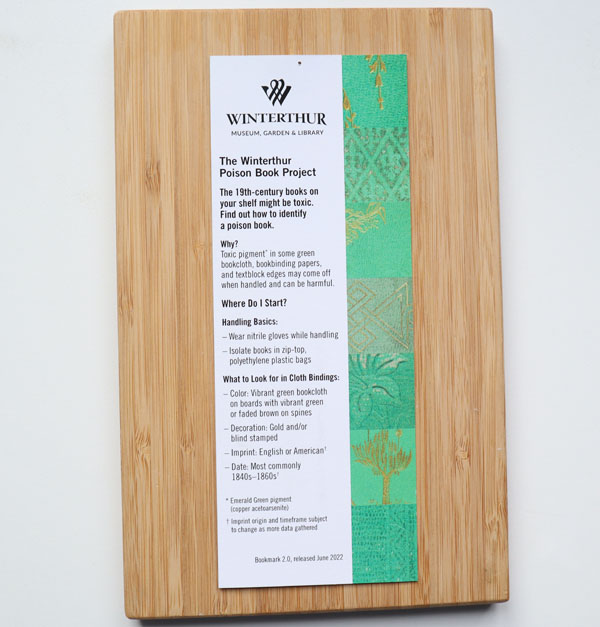
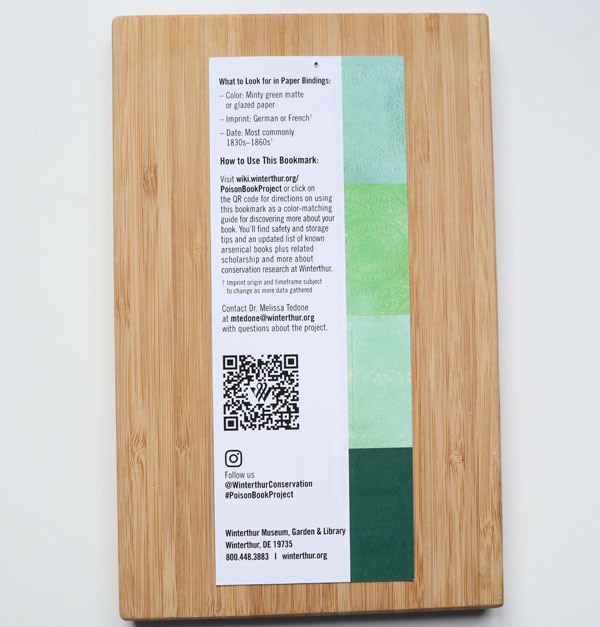
Step 3: Decide whether to keep or donate the book
Please, DO NOT throw the book away. These books are toxic and should be kept out of landfills and away from the environment and people. If you don’t want it, you can certainly donate it.
- Donate the book to the Poison Book Project. Make sure the book is stored in a ziplock bag and send it to the address above.
- Keep the book. These books can be managed when stored in a zip-top, polyethylene plastic bag. If you want to take the book out of the plastic, just be sure to wear proper PPE.
This is an example of one of my books that may be toxic. It meets all of the criteria, but I have not tested it directly. To be safe, I’m keeping it in a plastic bag.
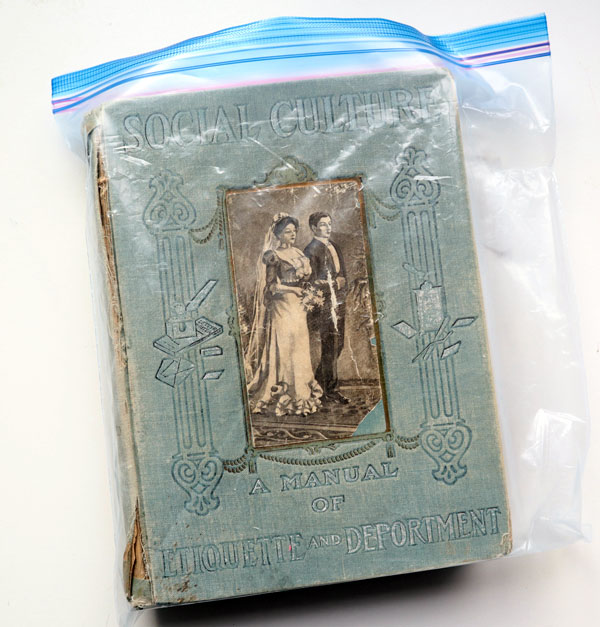
I’m still not sure if my book is toxic. What should I do?
In cases like these, I recommend reaching out to the The Poison Book Project to understand your options. They’re definitely more qualified to help than a mere bookbinder like me. Best of luck to you!!
More bookbinding goodness
✨ What tools do I need to get started bookbinding?
- Bookbinding Tools & Supplies Quick Start Guide – learn all about book making tools, which to buy first & where to go online
- Pick up my popular Complete Starter Bookbinding Tools Kit – all the bookbinding essentials in one spot
🌟 Looking for a simple way to start making books?
Try a Complete Book Materials Kit. Each one has everything you need (+ tutorials & videos) to make a beautiful book without all the fuss.
Thank you for taking me along on your book making journey!
Misty
